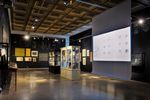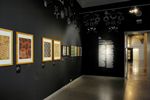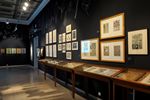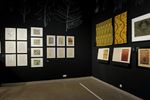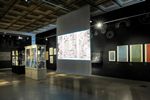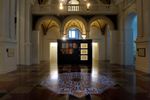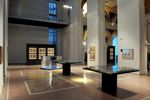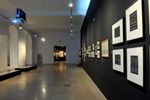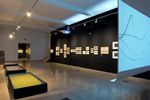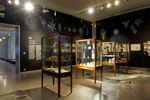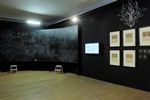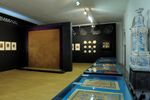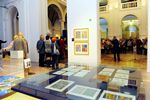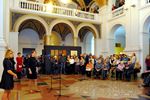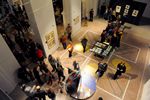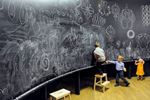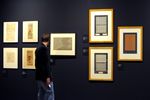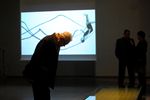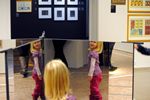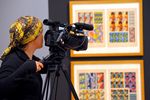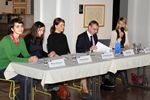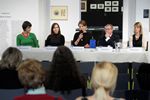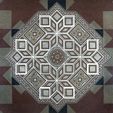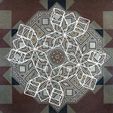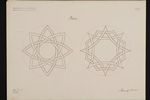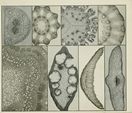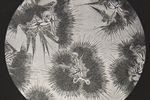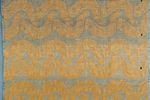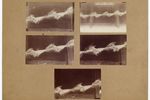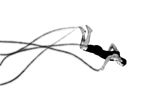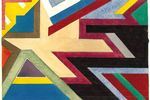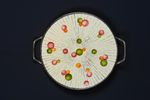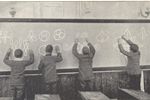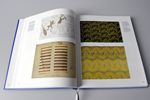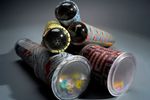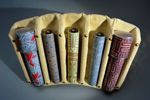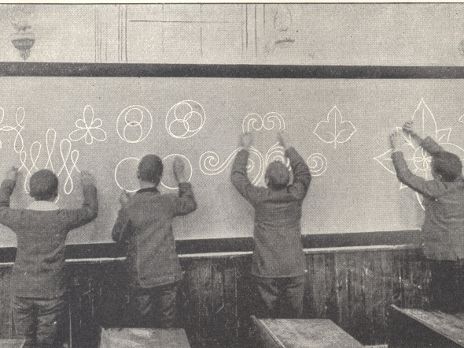
Museums and Schools of applied arts started to appear in Europe, and later in North America, in the second half of the 19th century. They were largely driven by pragmatic considerations of the economic interests of competing countries. World fairs, starting with the Great Exhibition in London in 1851, presented arts and crafts as products intended for sale and export. Leading figures in advanced industrial countries realised that the attractiveness of their products would be enhanced if they were to comply with the concepts of beauty and style current at the time. Ministries of trade thus endorsed the establishment of specialist schools and educational institutes that specialised in decorative art.
Economic interests were not the only forces stimulating such an unprecedented development of decorative art. There was a feeling in the air that the things that surround us, the things we touch and those that are immediately exposed to our vision, had positive influences on the development of human character. The world of objects was viewed as a second realm of nature. An interior filled with beautiful things was seen as a suitable environment for the development of "moral man". It was maintained that the aesthetics of objects somehow synergised with the ethics of society to create a better world.
Utility objects, in the order of furniture, fabrics, wallpaper, pottery, glass, books, and so on had to serve their purposes; at the same time they were to have tasteful, "artistic" forms conveyed by material and shape, as well as any extra ornament. As a result, the teaching of ornamentation became an important discipline at the new specialist schools. Although it certainly remained dominated by stereotypical decorative routine and by the copying of historical motifs, a particular domain was beginning to take shape, with space for innovative artistic experiments. Where teaching was devoted to ornament and "low" decorative art, there emerged nuclei of quiet, inconspicuous revolution that generated stimuli to "higher" art. Was ornament just a boring, outdated phenomenon, or an attractive catalyst of change?
This exhibition tends to the latter perspective: its objective is to point out aspects of ornamentalism that went on to reveal the new subjects and novel procedures later taken up by modernism. In contrast to the imitative practices of high art, ornament deliberately aimed to derive abstracts from what was seen, to stylize the elementary and to employ pure geometry. It was rooted in the natural science of the period, making full use of the detailed structures of what was being discovered in the natural world. Designers employed the microscope, the kaleidoscope and photography in the creation of their ornaments. Ornamentalism highlighted the subject of rhythm and movement, it touched upon the theory of colours, and included vision psychology. Ornament was to grow out of the imagination let off the leash; it was intended as a new, anonymous art as a fluid with the mundane as its solvent.
Traditional interpretations of history of modern art prefer artistic innovations made in the field of painting and sculpture and they often forget experimental capacity of ornamentalism and decorative arts. The Brno exhibition tries to point out this fascinating domain.
Apart from anonymous works in different materials (ceramics, glass, tin, textile, and rare printed editions) there are exhibited originals made by František Kupka, Vojtěch Preissig, Otto Eckmann, Marie Teinitzerová, František Kysela, Emanuel K. Pelant, Ladislav Sutnar, Czech-German artist Katharine Schäffner, and others. Presented textile patterns and ornamental albums are made by famous creators such as Koloman Moser, Josef Hoffmann, Moritz Meurer, Karl Blossfeldt, Alfons Mucha, Maurice Pillard-Verneuil, Tomáš Weigner. To illustrate connections between decorative arts and contemporary science (botanics, biology and mineralogy), you can see there herbals, collections of butterflies, crystals.
In particular thematic sections, the historical collections are completed by actual multimedia artistic interventions (Jan Záveský, Ondřej Přibyl, Filip Cenek) and mural chalk ornaments made by voluntary young decorators.
We thank the following institutions and individuals for the loan of exhibits - Vysoká škola uměleckoprůmyslová v Praze, Národní galerie v Praze, Národní technické muzeum, Národní muzeum, Uměleckoprůmyslové museum v Praze, Museum Kampa - Nadace Jana a Medy Mládkových, Univerzita Karlova v Praze, Moravské zemské muzeum, Zemský archiv v Opavě, Severočeské muzeum v Liberci, Muzeum skla a bižuterie v Jablonci nad Nisou, Regionální muzeum v Teplicích, Muzeum Jindřichohradecka, Muzeum regionu Valašsko, Valašské Meziříčí, Jihomoravské muzeum ve Znojmě, Západočeské muzeum v Plzni, Střední uměleckoprůmyslová škola, Bechyně, Modernista shop, Praha, and private collectors in Prague, Brno and Opava.
The exhibition is divided into six thematic parts.
I. The Ornament in Space
II. The Vital Forces of Plants and the Eternal Rhythm of
Nature under the Microscope
III. Crystalline Ornament and Animal Structures
IV. Ornamental Arabesque as an Impression of Movement
V. The Theory of Colours and the Shatt ered Image in a
Kaleidoscope
VI. Free School, Advances in Imagination and Abstract Ornament
I.
The Ornament in Space
The space in which you, as visitor, are standing was
created for the Moravian Museum of Applied Arts in 1882. The rich
decoration of the interior comes from the period in which the
exhibition took place, and is the work of the architect Johann
Georg Schoen, with the active help of a number of other designers.
Ornament was to relieve the dead mass of the walls by means of
optical rhythm, and to unite the whole in harmony. At the time, it
was accepted that, through decoration, the space and substance of
the building would be "spiritualized" with creativity. At the
psychological level, ornament drove away the fear of the
empty,horror vacui. A proper ornamental motif contained those
qualities intrinsic to nature to which people were accustomed: both
in the order of form and complexity, or the level of chaos.
Modernist Adolf Loos delivered his momentous "Ornament and Crime"
lecture to Vienna in 1910. Frequently cited and quoted since, it
was a sharp attack on decorativism. Nonetheless, Loos himself was
closely associated with the ornamental culture of the previous
generation, especially in his admiration for the natural
decorativeness of precious stones and trees and with links to
classical culture. For that matter, the Adolf Loos (Witwe)
stonemasonry company from Brno, owned by the parents of the famous
architect, participated in the ornamental decoration of this
interior.
The exhibition organisers thus decided to draw attention to the
reality of ornamentation created for a historical space and thus
making the whole an exhibit in itself. The central rosette is the
symbolic core of the space, lending a visual pulse to the room. The
digitally-animated approach to the linear configurations of the
rosette was researched and executed by theKomplotstudio (Jan
Záveský).
II. The
Vital Forces of Plants and the Eternal Rhythm of Nature under the
Microscope
Ornamental stylization around 1900 allied itself closely
to nature and to the fin-de-siècle boom in natural science.
Architecture and the applied arts were considered part of a
man-made "second natural world", and as such they were to follow
analogous laws and "creative vital forces". Ornamentalism in this
phase became applied botany, mineralogy and zoology.
Any plants were suitable for ornaments, from weeds such as
thistles to more botanically "noble" species. In response to an
intense interest in the prehistoric at the time, with Darwin's
theory of evolution fanning the flames, designers also turned to
"early" vegetation: algae, lichens, horsetails and ferns. They
observed the regular morphology and the principles of plant
structure under the microscope. Microscopes were widely employed in
science by the early 18th century, and many designers were using
micrographs before 1900.
Ornamentalists sought the universal laws of nature in the veining
of leaves, as well as in general branching and growth. A proper
ornament included the eternally pulsating natural rhythm, from the
embryonic seed, through sprouting, budding and blossoming to the
final fruit. Ornament was to be a symbolic image of the continuity
of life and rebirth. In terms of ideology, ornamentalism drew upon
vitalism and Steiner's metaphysics of nature. Vases in the shape of
plant stems and stalks, vessels symbolizing the forces of nature at
its maximum intensity, in the budding phase as well as in the
fading stage, appear particularly striking in this respect.
The ornamental stylization of plants endowed art with elementary
generalization, abstract schematization and interdisciplinary
quests. This section features a number of anonymous but valuable
decorative objects, a large quantity of ornament albums, school
pieces, designs, and decorative patterns by more or less renowned
artists such as Meurer, Blossfeldt, Gerlach, Grasset,
Pillard-Verneuil, Weigner, Mucha, Preissig, Eckmann,
Boudová-Suchardová and Riemerschmid, as well as by the students of
the College of Applied Arts, Prague.
III. Crystalline
Ornament and Animal Structures
The continuous line abstracted from plant growth and natural
processes was replaced, around 1910, by a more striking diagonal
deriving from inorganic shapes. In the applied arts, Czech cubism
was a natural continuation of art-nouveau vegetable patterns.
Natural models now included the sharp angles and edges of crystals.
Pavel Janák's iconic jar from 1911 already features a crystalline
form. Janák integrated the intricate geometrical formation of
pyrite crystals into its design. Microscopic crystalline structures
provided designers with a mesmerizing, extraordinary wealth of
shape combinations.
Further inspiration for ornamental exploitation was to be found in
the patterns that occur on animals' bodies: the wings of
butterflies and beetles, the feathers of birds. Charles Darwin
remarked inOn the Origin of Species, his revolutionary book (1859),
upon the "ornamental colouring of animals [...] elegant, refined
patterns" that were perfect expressions of both evolutionary and
aesthetic "fitness". The protective function of patterns in
relation to visual observation had long been tested by nature, and
designers were thus expected to make the most of them. Students at
specialist schools had natural science collections, and even school
menageries, at their disposal. Outstanding decorativists whose work
was derived from the animal kingdom included Pillard-Verneuil,
Mucha, Weigner, Moser, Séguy and many others.
IV. The Ornamental
Arabesque as an Impression of Movement
Ornament was to express the eternally flowing rhythm of
life and permanent change; it was to respect natural physical
movement and dynamics. The ornamentalists' interest in capturing
movement and the visual expression of dynamic rhythm anticipated
the central subject matter of the Italian futurists. Artists
associated with the avant-garde (Giacomo Balla, Marcel Duchamp,
František Kupka) were familiar with the chronophotographic records
of movement made by French physiologist Étienne-Jules Marey.
Decorativists such as Alfons Mucha, Vojtěch Preissig, Walter Crane
and some exponents of the Wiener Werkstätte also tried to
incorporate physiological impressions of movement into ornamental
reductions. Using a special chronophotographic gun, Marey captured
the individual phases of human and animal movement and thus
recorded a typical, "healthy" reduction of physical action.
Preissig went on to capture the trajectories of swallows' flight,
while Auchentaller recorded frogs' leaps, Moser the fluttering
movement of schools of fish, and Mucha transcribed the abstract
trajectory of a dancer's moves. Ornamental arabesque was an
impression of physical movement, its utmost abstraction.
The film loop on Marey's chronophotography and the ornamental
experiments features extremely slowed-down records of several
acrobatic jumps. In post-production, the key body parts were
provided with points that leave a visible arabesque created by the
body's movement in space. TheOrnament 1-5cycle, consisting of five
jumps, is by theKomplotstudio (Ondřej Přibyl, Martin Chum), in
collaboration with theLa Putykatheatre (acrobat Dan Komarov).
V. The
Theory of Colours and the Shattered Image in a
Kaleidoscope
The central object of this section is an enlarged model of a
kaleidoscope. In smaller form, it was a favourite tool of
ornamentalists of both art nouveau and art deco. Two mirror
surfaces enable regular patterns to be broken up and symmetrically
multiplied, depending on the angle of shift. What today appears so
easily reproduced by computer programmes was then facilitated by
the reflective surfaces of a pair of mirrors. The kaleidoscope was
a practical aid used by Alfons Mucha, František Kupka, Julius
Klinger and Hanns Anker. In the 1920s, Adélaïde and Maurice
Pillard-Verneuil created a brilliant series of ornamental templates
that withstands comparison to abstraction in the sphere of "high
art". Kaleidoscopic patterns often appeared on textiles.
Every decorativist had to be familiar with the theory of colours
based on the physical dispersion of light into a colour scale.
Ornament was to respect the basics of colour contrast and colour
combination, as an image had to be "visually comfortable" to the
eye. Yellow was to be naturally supplemented by blue and black with
green, as can be seen in the colour circle of a manual by Anton
Anděl, an ornamental drawing inspector. Valuable exhibits include,
as well as bibliophile ornament albums, decoration patterns by
František Kupka.
VI. Free School,
Advances in Imagination and Abstract Ornament
School curricula and the rules of how to teach ornamental drawing
changed over time, from a rigid approach and passive copying to
teaching and artistic experiments. The liberal approach was
significantly promoted by Vienna art theorist Alois Riegl who, in
his treatiseIssues of Style(Stilfragen, 1893), described ornament
as an autonomous creative act triggered by the artist's internal
drives. Riegl thus opened the door to the development of free,
fantastic, abstractly-composed ornament. Within the
Austro-Hungarian monarchy, some schools employed the method of
teaching ornament described by Liberty Tadd inNew Methods of Art
Education, New York 1899. Ornament was, through its configuration
and layout, to follow the possibilities and scales inherent in the
human body. Some schools thus taught ornament in the form of
training for ambidexterity. Ornament became a record of
psycho-physical education. Tadd's method of ambidextrous (in its
essence) gestic drawing - picturing the movements of the human body
- was developed in central Europe by Johannes Itten, Franz Čižek
and others.
In 1904, Czech-German artist Katharine Schäffner introduced
surprisingly early examples of free-style ornament. Art critics at
the time wrote of the "artistic musicality" and "inner vision"
captured in her ornamental charcoal drawings. Emanuel Pelant,
influenced by anthroposophy, presented another original take on
ornament, and passed his views on to a number of students.
The avant-garde turned their backs on decorativism; for them,
ornament was nothing short of anachronism, superfluous glitz. Yet
Katharine Schäffner's imaginative ornament, Marie Teinitzerová's
woven abstract geometrical patterns and colour compositions of
sprayed decoration on cake trays, pots and vases present no less
innovative and revolutionary approaches to the autonomy of artistic
expression.
Publication:
Lada Hubatová-Vacková,Silent Revolutions in Ornament. Studies from
Applied Arts and Crafts in 1880-1930, AAAD Prague 2011,
translation: Daniel Morgan, Kathleen Hayes, 288 pp.


